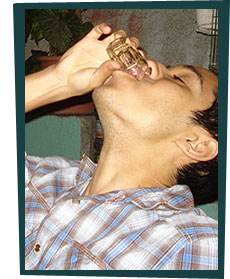|
|
 Alcohol is a commonly used drug and its active ingredient, ethanol, is found in beer, wine, and liquor. For centuries, alcohol has been used for medicinal, religious, and recreational reasons. Alcohol is commonly used in social situations and perceived as a drug with little risk; however, use can lead to alcohol related problems including binge drinking, high risk drinking, abuse and dependency. Alcohol is a commonly used drug and its active ingredient, ethanol, is found in beer, wine, and liquor. For centuries, alcohol has been used for medicinal, religious, and recreational reasons. Alcohol is commonly used in social situations and perceived as a drug with little risk; however, use can lead to alcohol related problems including binge drinking, high risk drinking, abuse and dependency.
Alcohol is a psychoactive drug, which results in changes in a user’s perception, mood, consciousness and behavior. It is classified as a depressant which can create calmness, anxiety reduction, sleepiness and pain relief. Slurred speech, discoordination and staggering are common behavior changes that occur from overconsumption. Alcohol acts on many neurotransmitters and receptors in the brain, which is why depressant effects are not the only reactions produced from drinking. Alcohol can also generate feelings of excitement or stimulation, known as a high, which is why it is often used as a social lubricant.
Alcohol is most commonly ingested. Although it can be used as a cooking ingredient, the alcohol content is typically cooked out, leaving only the flavor. Alcohol is dense in calories and if those calories are not used immediately in metabolic processes, then the excess calories are stored as fat.
. |
|